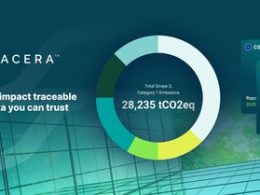Bloomberg has expanded its climate solutions suite, introducing a new range of transition analytics to help financial institutions assess how companies and portfolios are positioned as low-carbon technologies scale globally. The enhanced offering enables investors to identify opportunities, evaluate transition risks, and align portfolios with climate targets to drive resilient, long-term returns.
According to BloombergNEF (BNEF), global investment in low-carbon technologies has risen dramatically—from $160 billion in 2009 to $2.1 trillion in 2024. Investment in new renewable energy projects reached a record $386 billion in the first half of 2025, marking a 10% year-on-year increase. With capital flowing rapidly into clean technologies, investors are under mounting pressure to assess how these structural changes are reshaping business models and investment performance.
Traditional approaches to transition risk have largely focused on the potential costs of carbon pricing and taxation. Bloomberg’s expanded analytics go further—offering a holistic view of exposure to market dynamics, technological disruption, and evolving regional policies. The new tools provide:
- Revenue and capex exposure to clean energy and fossil fuels, segmented by technology;
- Indicators of credibility in company transition plans and carbon targets;
- Revenue sensitivity analysis across multiple climate and market scenarios.
“Bloomberg’s enhanced transition offering provides deeper insights into how companies are exposed and adapting to the rise of low-carbon technologies,” said Jessica Bennett, Head of Transition Analytics at Bloomberg. “As this trend continues to evolve, we are committed to providing the analytics investors need to identify leaders and laggards, unlock value, and mitigate risks.”
The expanded suite is available on the Bloomberg Terminal, through Data License, and via bnef.com. It incorporates data on companies representing 96% of global market capitalisation, extending Bloomberg’s established transition risk, carbon forecast, and transition credibility datasets.
The new Transition Exposure Revenues dataset—developed by BNEF—maps how the revenues of over 100,000 companies are linked to 23 clean-energy and fossil-fuel activities, using proprietary Bloomberg data.
Complementing this, Bloomberg has launched Transition Capex data, offering a forward-looking perspective on corporate climate strategies. It captures reported investments in low-carbon technologies across energy, transport, industry, and infrastructure.
BNEF’s Company Transition Capex Tool, available on bnef.com, expands this further with bottom-up estimates for more than 9,000 companies, analysing nearly 70,000 transactions across 23,000 entities—equating to $5.26 trillion in estimated spending and 5.3 terawatts of power capacity between 2014 and 2024. The tool enables users to benchmark corporate investment strategies and identify transition leaders.
With the surge in climate-aligned investment, Bloomberg’s expanded analytics mark a pivotal step in helping investors quantify transition pathways, enhance portfolio resilience, and steer capital towards sustainable growth.





















